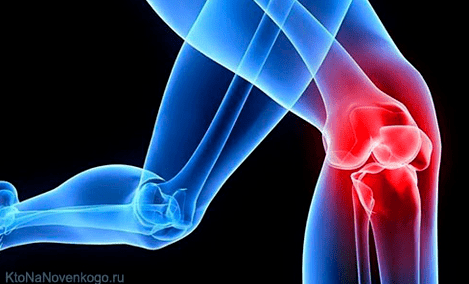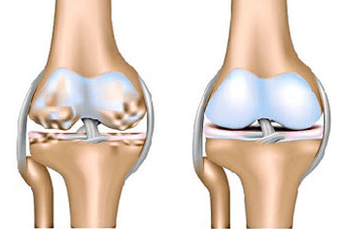From "arthritis" in ancient Greece, it was a joint disease ("joint" - joint, "-disease" - disease). Sometimes it is also called osteoarthritis or deformed osteoarthritis (from "osteon" - bones from ancient Greece).
It is wrong to call joint legends a disease - it is the name of the entire state, which includes many diagnoses.
Any joint disease, regardless of the cause, can be called arthritis, but this does not give the doctor or patient anything: the term "arthritis" has nothing to do with the cause or treatment of the disease, and has nothing to do with certain symptoms.
The term "arthritis" is very similar to another term - "This is arthritis". They both described damage to the joint, and usually both were associated with joint pain, but there were significant differences.

Often, arthritis is a disease associated with arthritis: an infection, hereditary or autoimmune disease causes the beginning of arthritis. Its main manifestations include pain, color changes, and swelling of the inflamed joint areas.
With the influence of the joints, the performance is less obvious, and the reasons are completely different.
How joints work (knees and others)
The musculoskeletal system requires a person to perform active movement in space. The bones are rigid frames, muscles-driven forces and joints where the bones move.
In the structure of the joint, there are always two ends adjacent to the bones that can move relatively with the help of muscles, and the gap between them is small. The joint gap is filled with special lubricant - synovial fluid. Nutritional needs of cartilage: There is no container in it, so he seizes all the nutrients from Synovia.
The joint ends of each bone are covered with cartilage to protect the bone tissue from friction. Cartilage also helps to "extinguish" vibrations and sharp mechanical loads: for example, the knees and joints of the foot take most of the energy from the strikes of the foot on the ground during a walk.
The recovery of these cartilages is a long and complex process that does not always end successfully.
All joints are limited by capsules - a membrane that holds joint fluid and does not allow it to spread. Almost all joints are supported by ligaments that do not allow adjacent bones to move too much and move in the wrong direction.
Causes of joints and how they develop
There are many causes of joint disease attacks, and in some cases it is a combination of factors, and sometimes it is impossible to establish a cause.
There are three main reasons, and there are more than a dozen. Most Popular:
- Joint damage;
- congenital joint abnormalities (dysplasia);
- The consequence of inflammation of any cause (arthritis);
- Age (usually over 50 years old);
- Violation of metabolism (trace elements), obesity;
- Too much load on the joints.
The development of osteoarthritis is divided into three stages:
- Original. There are no obvious signs and it is difficult to find it. The composition of synovial fluid is changing and its function is deteriorating.
- pain. Complaints and structural changes occur in the form of bone growth - bone plants.
- Severe arthritis. Added significant reduction in joint function: reduced or completely disappearing; joint deformation, changes in appearance of the limb.
First, the structure of the cartilage is disturbed: due to Synovia's composition or other reasons, it becomes thicker due to changes. The swelling of the cartilage fabric worsens its nutrition, so as time goes by, the cartilage begins to become thinner.
Then, in the most loaded part of the joint, the cartilage almost disappears or becomes too tight. In return, bone growth begins - the appearance of bone plants (bone "spikes).
At the end of the disease, the growth of the bone is so obvious that it limits movement to oxygen strength - the complete immobility of the joints.
Joint symptoms
Initial manifestations: Periodic pain after major physical exercise. Then, the stiffness of the morning is connected together - after waking up for a few minutes (up to 30 minutes), the joints appear to be connected by elastic bandages: movement is possible, but difficult.
Later symptoms:
- Pain in the joints;
- Thickening of bones in joints;
- motion limitations;
- The pain increases with less physical exercise;
- Deformation of limbs.
Most commonly, arthritis is a disease of the large joints of the legs (knees, hips) and hands (shoulders). The joints of the feet are less common.
The degeneration process in the joint can still be manifested in the form of abnormal sound during movement: tightening, rupture, impact.
diagnosis
Like any other disease, it begins with collecting a history of a disease.
It is especially important for doctors to find out whether there are risk factors (harm, arthritis, congenital defects, chronic diseases).
After talking and examining joints, other methods are needed: testing and instrumentation inspection.

The main study of joint diagnosis is radiography.
The picture will clearly see the main changes in the joints: reduced joint space, bone growth, deformation. In the initial stages, small bone plants can be seen along the edges of the joints, and growth along the entire joint space will be obvious during the late growth of the bones.
Ultrasound (ultrasound) is an additional method that helps determine the earliest cartilage thickness in arthritis. Arthroscopy is less common: Surgeons place small cameras directly into the joint space and take images of the cartilage.
Joint therapy
It is impossible to completely cure arthritis and restore the joints to their original state. Combining several methods correctly will only slow down the development of osteoarthritis, but "pre-return youth" will not work.
The main tasks of treating knee or hip deformed osteoarthritis:
- Moderate physical exercise (running, walking, sitting);
- Special exercise, exercise therapy (physical therapy exercise);
- Diet;
- Drug treatment;
- Surgical treatment.
With the articulation of the shoulder joint or other positioned joints, the principle does not change except to correct the load on a particular joint.
In each case, the doctor chooses physical activity and exercise. Diets usually include dietary enrichment with unsaturated fatty acids, multiple proteins, moderately limiting carbohydrates (especially simple proteins, which are "fast").
Rejecting bad habits (smoking, alcohol consumption) significantly slows down joint development. Diet also depends on the cause of the disease, chronic disease. You do not need to take dietary supplements.
Medication treatment - painkillers. NSAIDS-regular use of nonsteroid anti-inflammatory drugs. Suitable choices depend on the presence of the chronic disease and the planned duration of administration. Less commonly used are corticosterols (glucocorticoids, steroid drugs).
Usually, doctors prescribe cartilage protective agents - drugs that contain some molecules that are important to cartilage. In most cases, such drugs have no effect on joints, especially in tablet form and ointment.
This medication really needs and produces real effects is extremely rare: when checking for fluids in the joints, you can check the amount of them and lack direct injection into the joint (-intra-articular injection).
in conclusion
Articity is a degenerative joint disease associated with mechanical damage to the growth of cartilage and bone tissue. It usually develops after a combined injury or long-term overload in people over 50 years of age.
Pain after load, morning stiffness and tightness manifested.
























